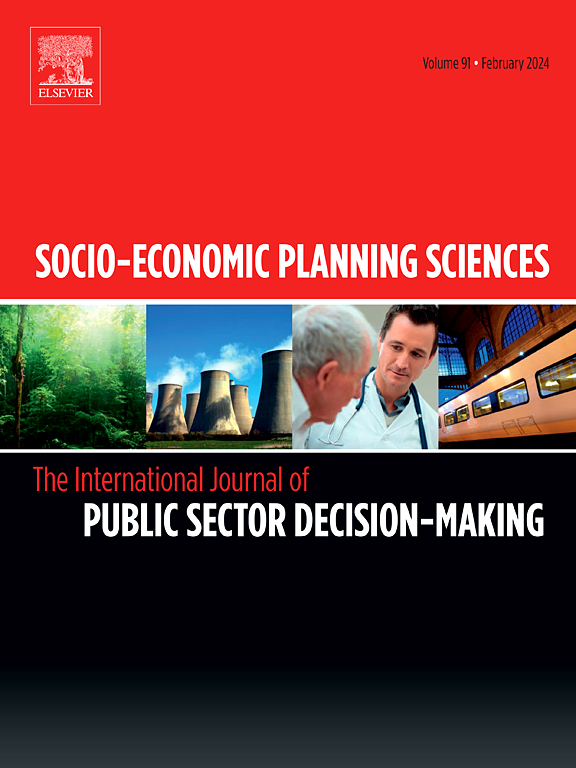一半大于全部:中国经济增长目标如何影响森林生态效率
IF 5.4
2区 经济学
Q1 ECONOMICS
引用次数: 0
摘要
受计划经济的影响,中国的经济增长目标(EGT)可能会干扰森林生态效率(FEE)的健康。本文从生态系统服务的角度,将产出分为供给服务、文化服务和调节服务,对2006 - 2019年中国30个省份的生态系统服务产出进行了测度。在此基础上,本文运用固定效应和阈值回归模型实证分析了EGT对FEE的影响。相关的结果有四方面。(1) FEE初期呈现波动后趋于稳定,2016-2017年福建平均FEE领先,湖北最高。(ii) EGT对FEE呈倒u型因果关系。(iii)制度力量理论认为,监管机制、规范机制和认知机制介导了EGT对FEE的影响,其中规范机制和认知机制的阈值为6.5%。社区所有的森林和在市场化程度较高的区域,对EGT的敏感性较低。该研究最后为政策制定者提出了战略建议,建议他们通过有针对性的改革来推进促进目标、完善产权结构和加强生态系统服务补偿,从而促进可持续的FEE。本文章由计算机程序翻译,如有差异,请以英文原文为准。
The half is more than the whole: How China's economic growth target affects forest eco-efficiency
With its command economy legacy, China's economic growth target (EGT) can interfere with the health of forest eco-efficiency (FEE). From the ecosystem services perspective, which categorizes outputs into supply, cultural, and regulating services, this study measures FEE of 30 provinces in China from 2006 to 2019. On this basis, this study empirically analyzes the effect of EGT on FEE using fixed effect and threshold regression models. The relevant results are fourfold. (i) FEE initially exhibits volatility before stabilizing, with Fujian leading in average FEE and Hubei recording the peak value in 2016–2017. (ii) EGT shows inverted U-shaped causality on FEE. (iii) Regulatory, normative, and cognitive mechanisms mediate the impact of EGT on FEE, as posited by institutional force theory, and normative and cognitive forces have the 6.5 % threshold value. (iv) Forests that are under community ownership and in regions with higher marketization demonstrate reduced sensitivity to EGT. The study concludes with strategic recommendations for policymakers to bolster sustainable FEE through targeted reforms to advance promotional objectives, refine property rights structure, and enhance ecosystem service compensation.
求助全文
通过发布文献求助,成功后即可免费获取论文全文。
去求助
来源期刊

Socio-economic Planning Sciences
OPERATIONS RESEARCH & MANAGEMENT SCIENCE-
CiteScore
9.40
自引率
13.10%
发文量
294
审稿时长
58 days
期刊介绍:
Studies directed toward the more effective utilization of existing resources, e.g. mathematical programming models of health care delivery systems with relevance to more effective program design; systems analysis of fire outbreaks and its relevance to the location of fire stations; statistical analysis of the efficiency of a developing country economy or industry.
Studies relating to the interaction of various segments of society and technology, e.g. the effects of government health policies on the utilization and design of hospital facilities; the relationship between housing density and the demands on public transportation or other service facilities: patterns and implications of urban development and air or water pollution.
Studies devoted to the anticipations of and response to future needs for social, health and other human services, e.g. the relationship between industrial growth and the development of educational resources in affected areas; investigation of future demands for material and child health resources in a developing country; design of effective recycling in an urban setting.
 求助内容:
求助内容: 应助结果提醒方式:
应助结果提醒方式:


